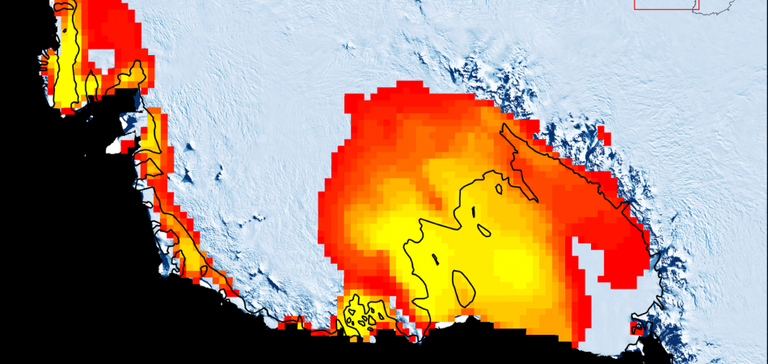For quite a while, there has been great concern over the consequences of global warming. There are reports of the Arctic ice caps melting faster than they should, tornadoes and other weather-related disasters happening more recently, and of the coral reefs dying out and turning a bland shade of white due to the unfavorable conditions.
Environmental activists such as David Suzuki are doing their best to inform the world of the trouble the human race is doing to the Earth, though their efforts are only so effective.
Antarctica Melting
As a result of their inability to communicate their message effectively enough, or perhaps as a consequence of our inability to change our environmental flaws, it was found to rain in the Arctic, despite its stereotypically snowy climate. Though this may seem insignificant, massive ice melt events have become more and more common.
For instance, in 2016, a significant portion of the Ross Ice Shelf melted over a period of 15 days. During this period, 300,000 square miles of ice melted into the sea. Over time, these melts could cause rising ocean levels, in turn leading to low-lying towns and cities being flooded.
Antarctic expert David Bromwich mentions that the never-before-seen rain offers “a possible glimpse of the future.” Even though the ice is slowly melting today, the resulting warm water will eat through the remaining ice shelves. This domino effect would make once-solid ice shelves become much more unstable, and all the more likely do melt into the ocean.El Niño To Blame?
A theory as to why the rain appeared is that an El Niño happened, which traditionally brings warmth to the area. The event brings warm, moist air from the ocean and transports it to the Ross Ice Shelf among other parts of Antarctica. Perhaps the most shocking consequence of this event is that it causes rain in a desert–that’s right, Antarctica is a desert.
The major loss of Antarctica’s ice is expected to result in as much as 4 feet in sea level increase, which would cause great floods across the world.
However, there is a sliver of hope in this madness. There is still time, albeit very little, for us to change our ways in saving the Earth. If that doesn’t happen, perhaps the more maniacal person would enjoy the other solution: wiping the human race off the planet completely. It has been estimated that within 23 days, the Earth would restore itself to a balanced state.El Niño To Blame?
A theory as to why the rain appeared is that an El Niño happened, which traditionally brings warmth to the area. The event brings warm, moist air from the ocean and transports it to the Ross Ice Shelf among other parts of Antarctica. Perhaps the most shocking consequence of this event is that it causes rain in a desert–that’s right, Antarctica is a desert.
The major loss of Antarctica’s ice is expected to result in as much as 4 feet in sea level increase, which would cause great floods across the world.
However, there is a sliver of hope in this madness. There is still time, albeit very little, for us to change our ways in saving the Earth. If that doesn’t happen, perhaps the more maniacal person would enjoy the other solution: wiping the human race off the planet completely. It has been estimated that within 23 days, the Earth would restore itself to a balanced state.

The Best
Hi! I am a robot. I just upvoted you! I found similar content that readers might be interested in:
https://undergroundscience.net/other/its-raining-in-antarctica-scientists-are-extremely-worried/